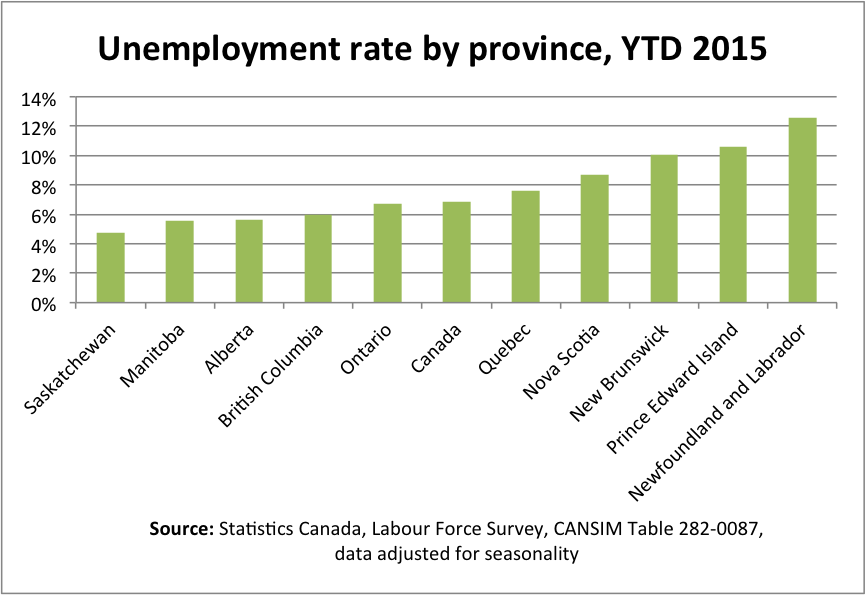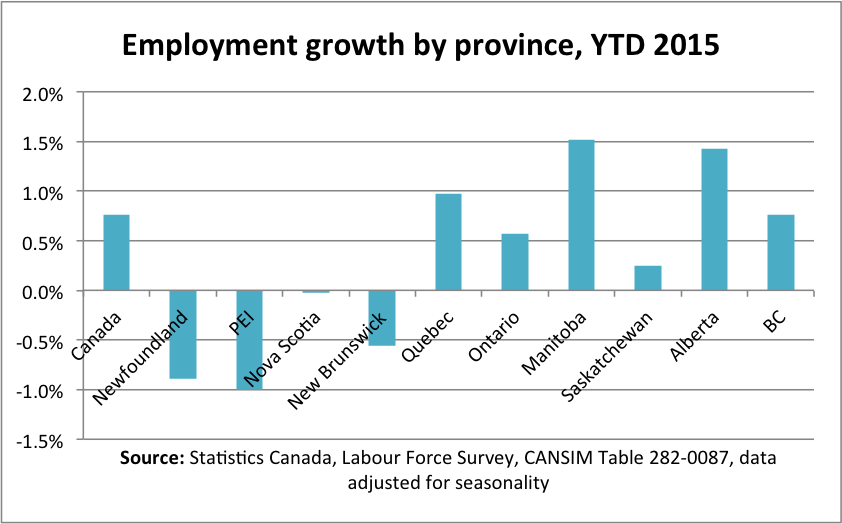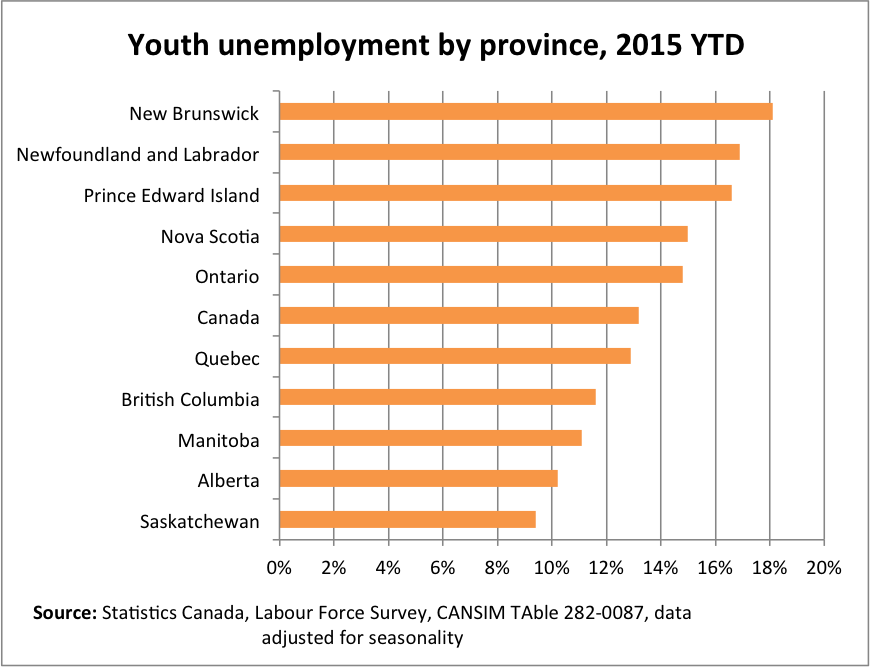At the end of the longest election campaign in Canada’s history, many of the country’s workers and unemployed have been waiting even longer for a job market recovery.
Here are three key job trends for Canada from 2007 to 2015 (year-to-date): unemployment rates remain above pre-recession levels; job growth remains slow in most provinces; and youth unemployment continues at a high level.
Keep reading to see how your province is faring.
Stubborn unemployment
Only one province has recovered its pre-recession unemployment rate and it’s Newfoundland and Labrador. The province may have won this distinction, but with an unemployment rate of 12.6% so far in 2015, it is still home to the worst unemployment rate in Canada.The other Atlantic provinces, along with Quebec, also have unemployment rates higher than the national average. Prince Edward Island comes in a close second with an unemployment rate of 10.6%, followed by New Brunswick at 10.1%, and by Nova Scotia at 8.7%. Though unemployment rates are declining since the recession, none of these provinces have returned to pre-recession unemployment levels.

At the other end of the spectrum, Saskatchewan’s 4.8% unemployment rate is the lowest in Canada — but that province has not yet returned to its pre-recession unemployment rate either.
Over the last eight years, Alberta’s unemployment rate has increased by 2 percentage points, from 3.6% in 2007 to an average of 5.6% so far in 2015. More than half of that jump occurred in the first nine months of 2015, thanks largely to a crash in world oil prices.
B.C.’s unemployment rate may have dropped for the last four years in a row, but the steady decline since the recession still leaves the unemployment rate 1.7 percentage points higher than 2007.
Sluggish job growth
Despite significant losses in the hard hit energy sector, Alberta’s 2015 job growth clocks in 1.4% so far in 2015. It is second highest in the country.Only Manitoba came in higher, managing a 1.5% increase in jobs so far in 2015.
All the other provinces came in at below 1% growth in employment, this compares to the national average of 2.3% between 2006 and 2007. Quebec rang in a distant third at less than 1% job growth in the first nine months of 2015.
At 0.6% and 0.75% respectively, Ontario and B.C. job has been lackluster in 2015. The long awaited impact of the drop in the Canadian dollar has not had an impact yet. The employment rate in both provinces still sits at a shadow of pre-recession levels.

Saskatchewan showed a modest increase as well, while Nova Scotia saw no change at all in the number of jobs available to workers in the province.
Newfoundland and Labrador, New Brunswick and P.E.I., on the other hand, both saw significant declines in employment during the first nine months of 2015.
High youth unemployment
Youth unemployment is highest in New Brunswick at 18.1%. That province has seen a 50% increase in the youth unemployment rate since 2007 – the largest increase in Canada.Newfoundland comes in as the only province to be home to a lower youth unemployment rate than in 2007, but it still has the second highest youth unemployment rate in Canada.
Every other province in Canada has a worse rate of youth unemployment now than before the recession.

Kaylie Tiessen is an economist with the Canadian Centre for Policy Alternatives’ Ontario Office. Follow her on Twitter: @KaylieTiessen






